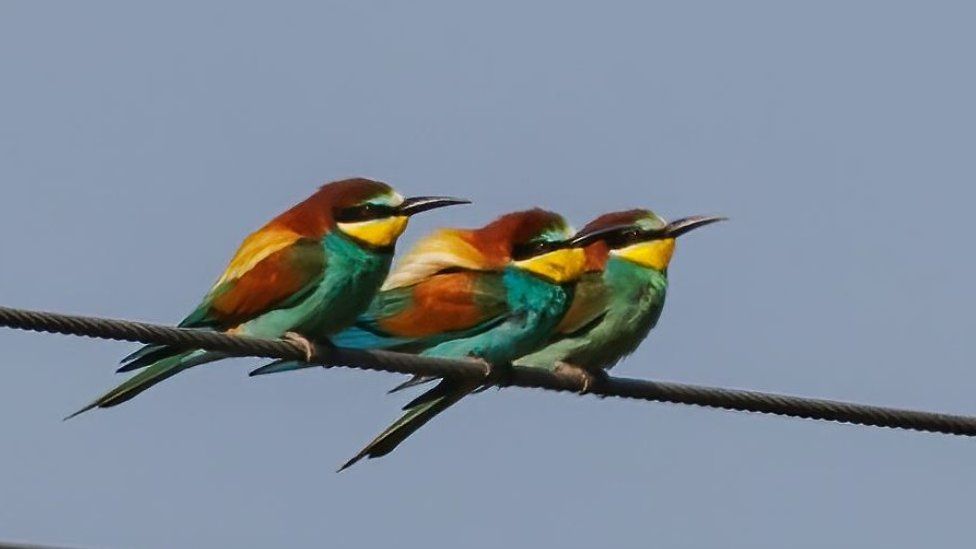Historic moment as bee-eater birds return to Norfolk for the summer
- Published
- comments

Two of the trio spotted in Norfolk are a nesting pair
A bird with rainbow feathers isn't something you'd usually see in the UK.
But lucky bird watchers in Norfolk will be able to see these European bee-eaters as they visit for the summer.
The three bee-eater birds are believed to have made an historic return to the UK after a colony successfully hatched chicks at the same site last year.
The charity RSPB said it was the first time they had returned to the same breeding site in the UK year on year.
This year's bee-eaters have returned to the same sand quarry near Cromer where some bred last year
It's very rare for these birds to breed in the UK and 2023 marks just the seventh breeding attempt in England in the past 20 years.
Two of the trio spotted in Norfolk are a nesting pair, which has left people hopeful for some chicks to hatch later in the summer.
Facts about European bee-eaters
European bee-eaters are about the size of a starling (27-29cm in length).
They have a mixture of different coloured feathers -red backs, yellow throats and turquoise bellies.
They feed on various species of bees, dragonflies and other flying insects that they catch in mid-air.
Bee-eaters make burrows and raise their chicks together
Mark Thomas from the RSPB said it was a "real possibility" they were the same birds as last year, suggesting it could be the start of bee-eaters "properly colonising the UK".
"Their return is a vivid reminder of the changes being wrought by our overheating planet."
Bee-eaters are a migratory bird, which means they spend time in one place in the summer to breed and move to somewhere warmer for the winter.
He added: "Bee-eaters are a species found commonly in the southern Mediterranean and northern Africa and as our planet warms they - along with other species - are being pushed further north."
The bee-eaters can be identified by their red backs, blue bellies and yellow throats
There are 27 different types of bee-eaters to be found, mostly in Asia and Africa.
The birds are known to migrate to southern Europe in late April through to early June.
The birds are expected to remain in the area until the end of summer, after which they will fly to southern Africa for the winter.
- Published13 June 2023
- Published25 May 2023
- Published26 April 2023
